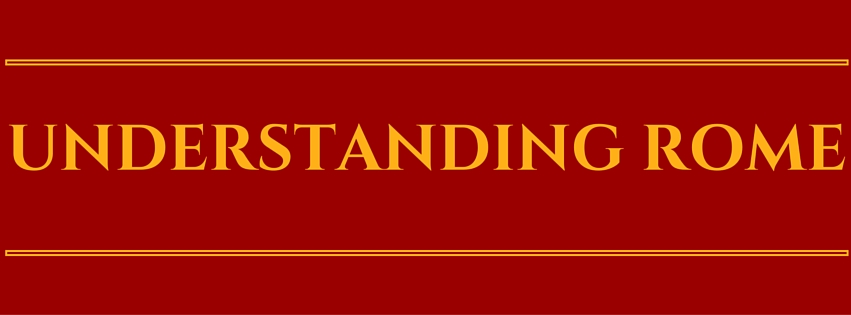
Pyramid of Gaius Cestius in an engraving by Giovanni Battista Piranesi, c.1755
If you find yourself entering Rome by the via Ostiense, you might be surprised to see a large white marble pyramid, not perhaps a form one associates with the city. It certainly struck Thomas Hardy, and in his poem Rome at the Pyramid of Cestius Near the Graves of Shelley and Keats, he wondered:
Who then, was Cestius
And what is he to me?
Amid thick thoughts and memories multitudinous
One thought alone brings he.
I can recall no word
Of anything he did;
For me he is a man who died and was interred
To leave a pyramid
His poem goes on, with inimitable British solipsism, to determine that really whatever it was that Gaius Cestius had done in life to merit such a splendid tomb, in death his chief purpose was to “beckon pilgrim feet, with marble finger high” as they flock to the tombs of Keats and Shelley in the adjacent cemetery. Poor old Gaius Cestius becomes, for Hardy, little more than a signpost for dead Romantic poets.
This is, of course, thoroughly unfair. Indeed had Hardy torn himself from his reverie and looked at the inscription, which Cestius had especially ordered on two sides, that it might be seen by all passing traffic, he could have determined who indeed then was Cestius. It tells us:
C CESTIUS L F POB EPULO PR TR PL
VII VIR EPULONUM
Which is to say, Gaius Cestius Epulo, son of Lucius, of the voting tribe Poblilia, praetor [chief magistrate], tribune of the plebs, one of seven state priests in charge of public banquets [the epulones] which celebrated various religious festivals.
The choice of a pyramidical form suggests that Cestius may have served in the far reaching province of Nubia (southern Egypt/northern Sudan); the tall narrow pyramids of the region may have inspired his choice of tomb. This is a civil servant made good advertising his sophistication; the ultimate souvenir of a well-travelled man.
That his tomb survives in such good condition can be attributed to its incorporation within the fortifications of the city in the late third century; those ancient buildings which survive tend to do so because they were turned into something else, usually churches or fortresses.
In the 1660s, excavations found the bases of long since pillaged bronze statues. They bear inscriptions which name Cestius’ heirs (which include Augustus’ son-in-law Marcus Agrippa – leaving property to the Imperial family was not an uncommon way to curry favour). The inscriptions tell us that the statues were paid for by the ale of valuable tapestries from Pergamum (presumably picked up on another his travels) with which Cestius had intended to decorate the interior of the pyramid, but which contravened a law on luxury passed in 18 BC. As Marcus Agrippa is known to have died in 12 BC the pyramid can be dated to between 18 and 12 BC.
Instead of these attalici, the epitome of Eastern bling, the barrel-vaulted central chamber had to make do with simple but elegant fresco paintings. And last Saturday morning, thanks to the organization and enthusiasm of a fellow guide (thank you Guido!), I was able to enter the pyramid. The interior of the pyramid is accessed by a low corridor carved out in the 17th century, originally it was entirely sealed.
Despite damage caused by “tomb raiders”, including the theft of the sarcophagus and any other removable pieces, and the detachment of choice pieces of fresco (then sold as souvenirs to Grand Tourists), the chamber remains surprisingly well-preserved.
In the photograph above, alongside an elegantly painted candelabrum, the tunnel burrowed into the chamber by tomb raiders is visible.
The barrel vault is decorated with four winged victories, while the damaged part in the centre indicates that the tomb raiders burrowed upwards into the pyramid in search of more loot.
This mix of modern Roman painting within a monument inspired by far-flung tombs which predate Rome’s foundation is a wonderful analogy for the ancient city as a whole; elements were borrowed from the exotic and the ancient to create an eclectic architectural language which is spoken with a thoroughly Roman accent.
At the time of writing scaffolding was being erected on the pyramid’s exterior for a restoration project. Hopefully it won’t stay there forever…
Pyramid of Gaius Cestius,
piazzale Ostiense.
The interior is visitable at 11am on the second and fourth Saturdays of the month. Booking necessary (06 39967700). Euro 1.50








Great post. It’s too bad, but fairly predictable, that Cestius’ tomb was raided for its valuables.
One small point: In Cestius’ own inscription which reads, “C CESTIUS L F POB” etc., the abbreviation “POB” (for Poblilia”) refers not to Cestius’ “gens” (as you suggest) but to his voting tribe, the “tribus Poblilia.” Cestius’ “gens” would be the “gens Cestia,” not “Poblilia.”
Thanks for a great post. I just wanted to make that note about “Poblilia.”
Good point! Oops!
“We are so pious, we lovers. Discreetly we worship all powers,
Hoping for favor from each god and each goddess as well.
We are like you, ye victorious Romans, in this: for we offer
Gods of all peoples and tribes, over the whole world, a home—
May the Egyptian, black and austere out of primeval basalt,
Or from the marble a Greek, form them charming and white…”